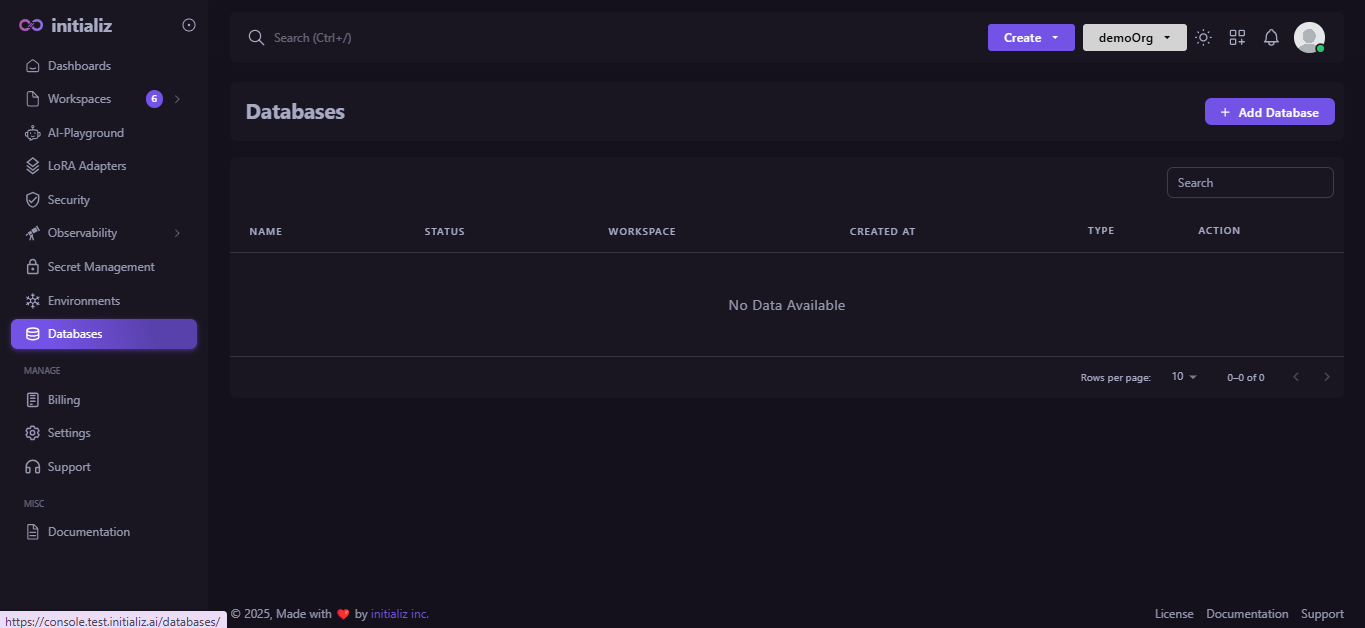Database
1. MongoDb - A document-oriented database.
2. Postgresql - A relational database that also supports key-value storage.
3. Redis - A key-value store known for its exceptional speed in handling operations with key-value pairs.
4. Qdrant - Qdrant is a high-performance, open-source vector database optimized for similarity search and AI-powered applications
-
Choosing a database
Selecting the right storage solution depends on your requirements for latency, durability, consistency, and various other factors.
To assist you in making this decision, we’ve provided a table below that summarizes the benefits of each storage option in relation to one another.
| Features | MongoDB | PostgreSQL | Redis | Qdrant (Vector Database) |
|---|---|---|---|---|
| Read Time | Fast for simple queries; can vary for complex aggregation. | Generally fast, optimized for complex queries. | Extremely fast (in-memory). | Fast for nearest neighbor searches and vector queries. |
| Write Time | Fast write operations; handles high write load well. | Moderate; optimized for ACID compliance. | Extremely fast (in-memory). | Optimized for vector indexing and fast insertions. |
| Use Cases | Document storage, real-time analytics, content management. | Relational data, complex queries, transactional applications. | Caching, real-time analytics, session management. | Similarity search, recommendation systems, AI/ML apps. |
| Limits | Size limit of 16 MB per document, horizontal scalability. | Maximum database size of 32TB (varies by version). | Limited by available memory (data stored in-memory). | Limited by disk/memory, optimized for vector search. |
| Data Type | JSON-like documents (BSON). | Structured relational data (tables). | Key-value pairs. | Multi-dimensional vectors. |
| Indexing | Supports various index types (B-tree, compound, text). | B-tree, GIN, BRIN, Hash indexing. | In-memory key-value store indexing. | HNSW (Hierarchical Navigable Small World) indexing. |
| Query Type | Aggregations, text search, geospatial queries. | SQL-based complex queries, joins. | Simple key-value lookups. | Approximate nearest neighbor (ANN) search. |
| Scalability | Horizontal scaling via sharding and replication. | Vertical scaling; some horizontal scaling options. | Horizontal scaling with clustering. | Horizontal scaling with distributed search support. |
-
Access the Database tab
To access the database tab, select the "Database" option in the sidebar.
This section provides a comprehensive list of existing databases, including the database
name,status,workspace(where the database was created),creation time, andtype of database.To view detailed information about a specific database, simply click on its entry.
